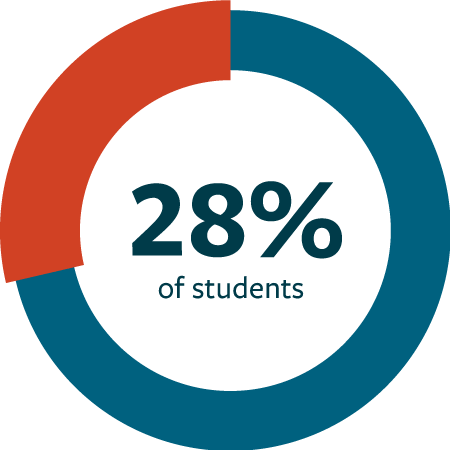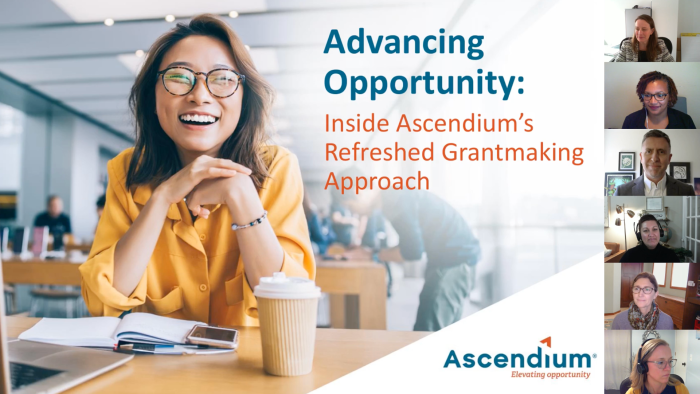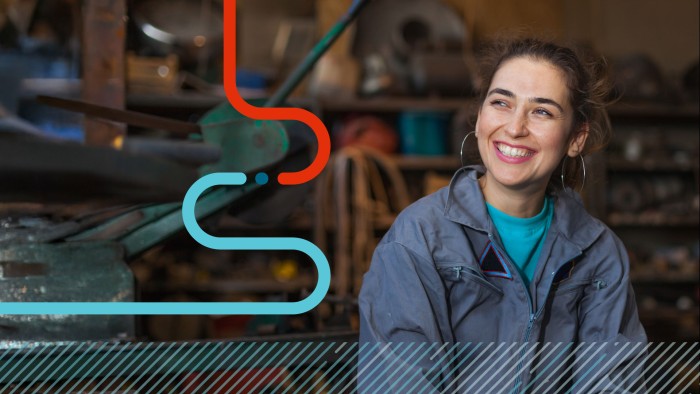 All News and Insights
All News and Insights
Ascendium Explains: Credit Mobility
A Snapshot of Today's Learners
Here’s the traditional narrative told about postsecondary education: an 18-year-old graduates from high school in the spring and attends a four-year institution in the fall. They choose a major and stick with it, taking courses full-time without any outside life or work responsibilities. In the spring four years later, they walk across the graduation stage and into their professional life.
But this narrative has not been representative for a long time. Today, almost 75% of learners enrolled in education after high school are over 22 years old, and they have significant work and family obligations (NCES). They are parents, full-time employees, veterans, currently and formerly incarcerated individuals, and people switching careers.
KEY TERM
Learner mobility: The movement of learners between programs, institutions, learning systems, jobs, fields, and locations across their lifetime.
Similarly, learners are also more mobile than ever, moving between jobs, fields, locations, institutions, and types of institutions. During the COVID-19 health crisis, for instance, nearly half of Americans expressed a desire to leave urban centers for suburban and rural areas — and many did so thanks, in large part, to remote work opening more possibilities for relocation (World Economic Forum).
As a result, starting, stopping, and moving around are more common as learners pursue a postsecondary credential. In fact, over 40 million people have attended college but stopped out before earning a credential (The NSC Research Center). This number is only increasing, with massive implications for postsecondary education institutions. If even a fraction of the 40 million learners with some college, but no degree decides to return to the classroom, millions will need to return to a postsecondary institution. Either they will return to the same institution to complete the original credential or, in what’s called lateral transfer, they will enroll at a different institution, maybe even a different credential program.
The most common way learners transfer is through vertical transfer. On this pathway, a learner will transfer from a two-year institution, such as a community college, to a four-year institution, such as a university. And yet, very few learners actually transfer from a two-year institution and earn a bachelor’s degree.
Why is that?
A Snapshot of Today’s Credit Transfer Systems
Most postsecondary education institutions are designed for learners who fit the traditional narrative, remain in one area, and have access to a nearby institution. We know that learners are transferring vertically, from two- to four-year institutions. A growing number of learners are transferring laterally and even multi-directionally. 45% of associate’s degree holders and 67% of bachelor’s degree holders have earned credit from multiple institutions (National Student Clearinghouse Research Center).
As mobile as learners are, their credits, however, are not as mobile.

Lost over 90%
of credits

Lost between
10-89% of credits

Lost less than 10%
of credits
Source: Monaghan and Attewell
When we talk about learners stopping out and not returning versus earning a credential, we need to talk about credits that may be lost in the process of transferring between institutions.
KEY TERM
Credit: The unit of measurement by which an educational institution recognizes learning in the pursuit of degree completion. Credit is usually earned by taking courses at a college or university.
KEY TERM
Credit Transfer: The recognition of equivalence and acceptance of prior learning from one educational institution to another.
So, let’s break down credit transfer between institutions.
Whether a learner is returning to the same institution or transferring to another institution, they need their previously earned credits to be accepted and applied to their chosen program. When this happens, learners can begin again, right where they left off.
But whether and how many of their credits are accepted and applied is up to each institution’s policies. These policies may not have been updated to accommodate the mobility of learners today. Even if a learner’s credits are accepted, those credits may not apply towards their chosen program but, instead, count towards total credits needed for graduation. For this reason, learners who transfer to a new institution may have to repeat degree-specific coursework, such as math and science classes required for an engineering major.
Worst-case scenario, the new institution accepts no previous credits and the learner must start from scratch. This credit loss can be a hurdle for learners who want to complete a credential, especially those who have significant work and family responsibilities. And this population is the majority of postsecondary learners today. To top it all off, learners who must retake courses due to credit loss also risk running out of financial aid eligibility.
KEY TERM
Credit Mobility: The portability of counted learning between postsecondary educational and workforce training institutions.
Because learners earn credits in order to earn a credential, credit mobility is key for keeping learners on track for program completion when they transfer between institutions. Even if credit transfer is not 1-to-1, learners should have opportunities for their learning to be as mobile as they are. So, what does improving credit mobility look like in practice? Credits and other prior learning moving seamlessly from institution to institution across a learner’s lifetime.
To dive deeper into how credit mobility affects transfer student outcomes, let’s take a look at three common scenarios.
Learner Journey Examples

Dual Enrollment Journey

Credit for Prior Learning Journey

Stopping Out Journey
Improving credit transfer practices to support more learners in their postsecondary education journeys ultimately requires systems-level change. That’s why Ascendium is investing in initiatives like CUNY’s Transfer Explorer and the Transfer Student Success Intensive.
At the state level, many organizations are working to facilitate more seamless transfer through improved policies and coordination of their postsecondary institutions. For example, the Texas Transfer Alliance is a collaboration of Texas public universities and community colleges focused on collectively improving transfer student outcomes. The Michigan Community College Association aims to build new baccalaureate transfer pathways with universities in the state and strengthen advising practices related to both transfer student and career outcomes.
All these initiatives help learners and practitioners understand how credits transfer, which learners are not well-supported by current policies, and why it’s important for institutions to be transparent when providing credit for prior learning.



